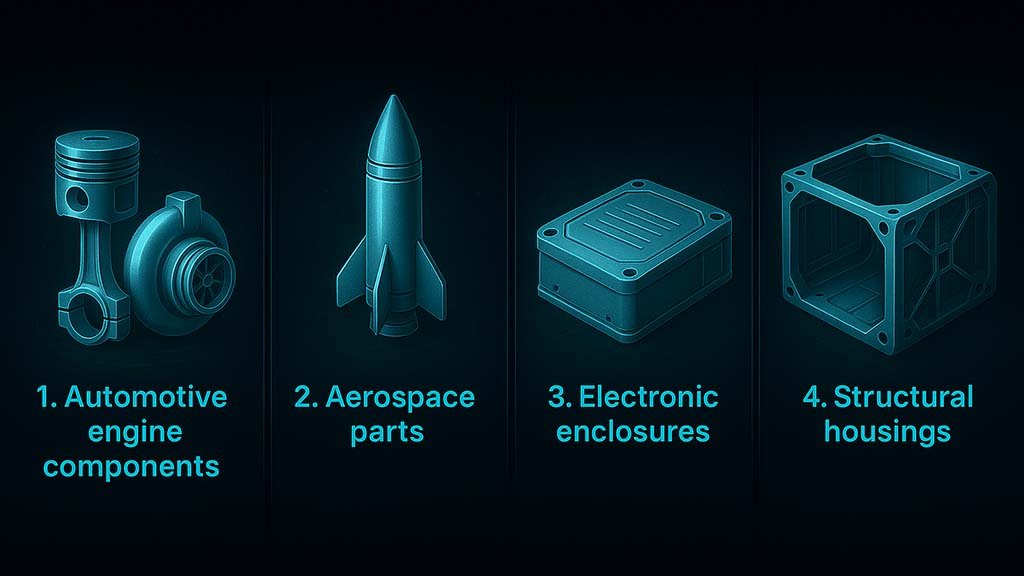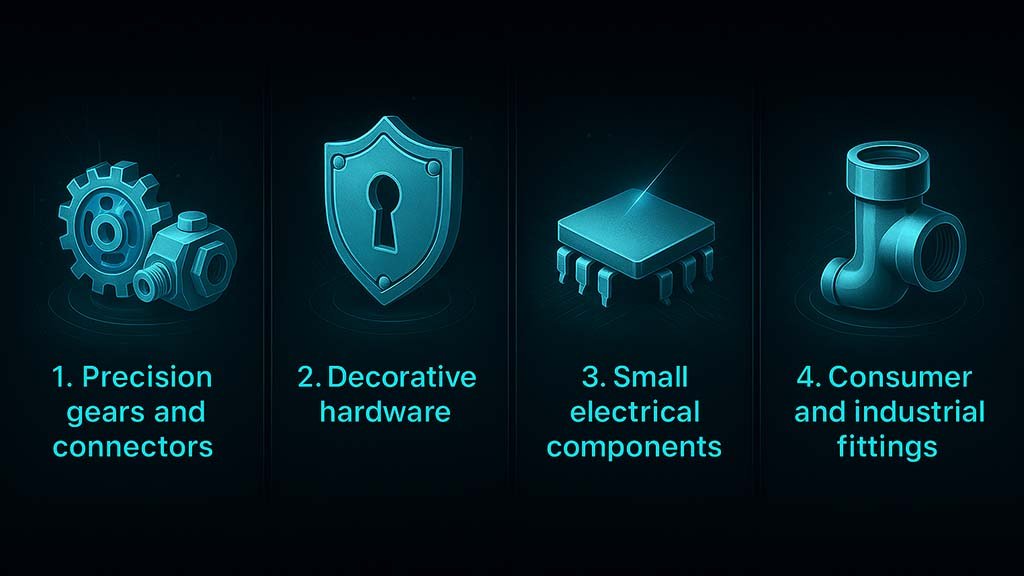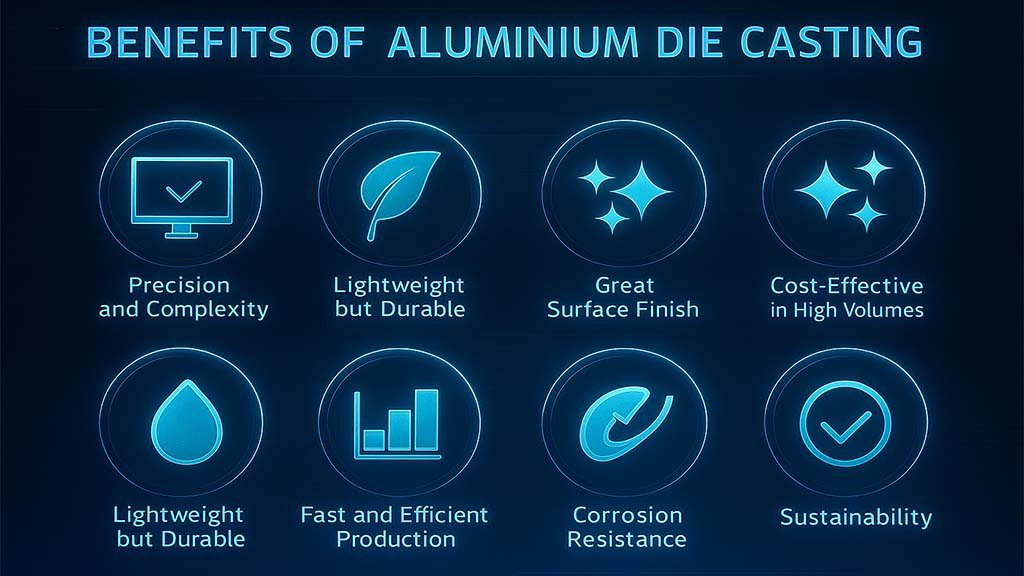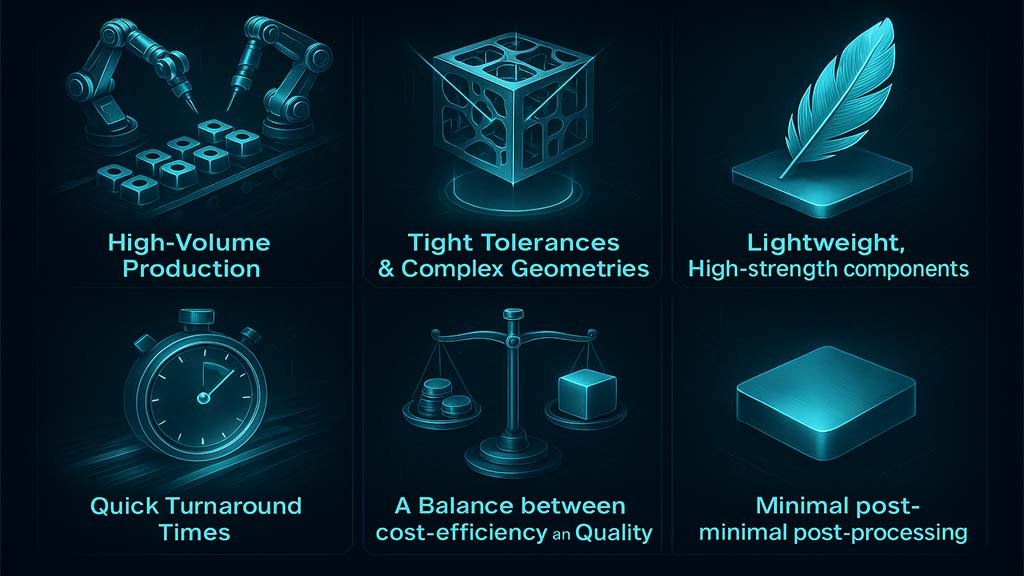When it comes to producing precision metal parts, Aluminum Die Casting and Zinc Die Casting are two of the most trusted methods used across various industries. Both processes involve injecting molten metal into a steel mold or die under high pressure to create intricate and dimensionally accurate components. However, the performance, properties, and cost-efficiency of aluminum and zinc differ significantly.
Understanding the differences between aluminum and zinc die casting is critical when choosing the right material and process for your product design and industrial needs. In this article, we break down the key differences to help you make an informed decision.
Aluminum Die Casting uses lightweight aluminum alloys that are ideal for high-strength applications where weight reduction is essential. These alloys are commonly used in the automotive, aerospace, and electronics industries due to their high corrosion resistance and excellent thermal conductivity.
Zinc Die Casting, on the other hand, utilizes zinc alloys such as Zamak 3 and Zamak 5. Zinc is known for its superior dimensional accuracy, toughness, and the ability to create highly detailed components. Zinc Die Casting Manufacturers in India often prefer zinc for smaller, more intricate parts used in electronics, home hardware, and industrial components.
One of the most noticeable differences between these two materials is their weight.
In terms of strength, both materials perform well, but in different ways. Aluminum offers excellent tensile strength, especially at higher temperatures. Zinc offers high impact strength and is more malleable, which helps in complex molding and reduces the risk of cracking during casting.
Zinc Die Casting excels in producing parts with tight tolerances, thin walls, and fine details. The lower melting point of zinc (~420°C) allows for better flow into intricate mold designs, resulting in less need for secondary machining.
Aluminum Die Casting also produces precise components, but it may require additional post-processing to achieve the same level of detail and surface finish as zinc. This makes zinc more suitable for components where finish quality and dimensional precision are top priorities.
Aluminum is naturally resistant to corrosion due to the formation of an oxide layer on its surface. This makes Aluminum Die Casting ideal for outdoor or marine applications, as well as for parts that need to withstand high-temperature environments.
Zinc also provides good corrosion resistance, especially when coated or plated. However, zinc has a lower melting point, which limits its application in high-heat conditions compared to aluminum.
Cost is often a determining factor in material choice. While Aluminum Die Casting offers performance advantages in certain applications, it typically requires higher energy consumption and shorter tool life due to the elevated temperatures used in the process.
In contrast, Zinc Die Casting offers longer die life, faster cycle times, and lower overall production costs, making it a preferred option for high-volume manufacturing.
Aluminum Die Casting is commonly used for:

Zinc Die Casting is ideal for:

Both Aluminum Die Casting and Zinc Die Casting offer unique advantages that suit different industrial needs. When evaluating which to choose, consider factors such as part size, mechanical requirements, production volume, and budget.
For intricate, small, and cost-efficient parts, Zinc Die Casting is the way to go—especially when working with leading Zinc Die Casting Manufacturers in India. For lightweight, high-strength, and heat-resistant components, Aluminum Die Casting is the superior option.
Looking for a trusted partner for your casting needs? OME Verma Industries, a Leading Aluminium Die Casting Manufacturer in India, delivers high-quality solutions with precision engineering, advanced technology, and industry-proven expertise.
In the world of modern manufacturing, efficiency, precision, and cost-effectiveness are key factors when choosing the right production method. One such process that continues to gain popularity across industries is aluminium die casting. From automotive and aerospace to electronics and consumer goods, this method is widely adopted for its ability to produce complex, high-strength components at scale.
But is aluminium die casting the right fit for your specific manufacturing needs? In this blog, we’ll explore what makes this process so effective, its advantages, and how working with experienced aluminium die casting manufacturers can elevate your production capabilities.
Aluminium die casting is a process in which molten aluminium is injected into a steel mold — called a die — under high pressure. The metal then cools and solidifies to form a part that mirrors the exact shape of the mold cavity. Once cooled, the part is ejected, trimmed, and finished as needed.
This method is known for its ability to produce complex, highly detailed, and dimensionally accurate components with smooth surface finishes. Die casting manufacturers prefer this technique for high-volume production where consistency, speed, and strength are essential.
If you’re evaluating whether aluminium die casting fits your manufacturing goals, consider the many benefits it offers:
One of the biggest advantages of aluminium die casting is its ability to create intricate shapes with tight tolerances. It’s especially useful for parts that require fine details, thin walls, or internal features that would be difficult to achieve with other methods.
Aluminium is significantly lighter than steel or iron but still provides excellent strength and rigidity. This makes it ideal for industries like automotive and aerospace, where weight reduction improves performance and fuel efficiency without sacrificing durability.
Once the die is created, the casting process can produce thousands of identical parts quickly. This makes it highly efficient for large-scale manufacturing. The fast cycle times help reduce lead times and ensure quicker deliveries to market.
Parts produced by aluminium die casting usually have a smooth and clean surface, often requiring minimal finishing work. This is particularly important for visible components or those requiring painting, powder coating, or anodizing.
Aluminium forms a natural oxide layer that protects the metal from corrosion. This makes die-cast aluminium parts suitable for applications in humid, wet, or chemically exposed environments.
While the initial investment in tooling can be significant, aluminium die casting becomes increasingly cost-effective in high-volume production. The low per-unit cost, minimal material waste, and reduced need for secondary operations make it an economically sound choice.
Aluminium is 100% recyclable, and many aluminium die casting manufacturers use recycled aluminium in their operations. This makes the process more environmentally friendly while also helping to lower production costs.

Aluminium die casting is ideal if your business requires:
However, if you’re producing very low quantities or oversized components, other processes like CNC machining or sand casting might be more appropriate.
Before deciding, it’s crucial to consult with experienced die casting manufacturers who can evaluate your project requirements and recommend the best approach based on design, volume, and budget.

Choosing the right manufacturing partner is just as important as choosing the process. A skilled and experienced die casting manufacturer can help optimize your part designs, reduce costs, and improve overall product quality.
OME Verma Industries is one of the top aluminium die casting manufacturers in India, known for delivering high-quality die cast components across various sectors. With advanced facilities, cutting-edge machinery, and a commitment to precision, OME Verma Industries ensures your manufacturing goals are met efficiently and reliably.
If you’re considering aluminium die casting for your next project, reach out to OME Verma Industries — where innovation meets precision in every cast.